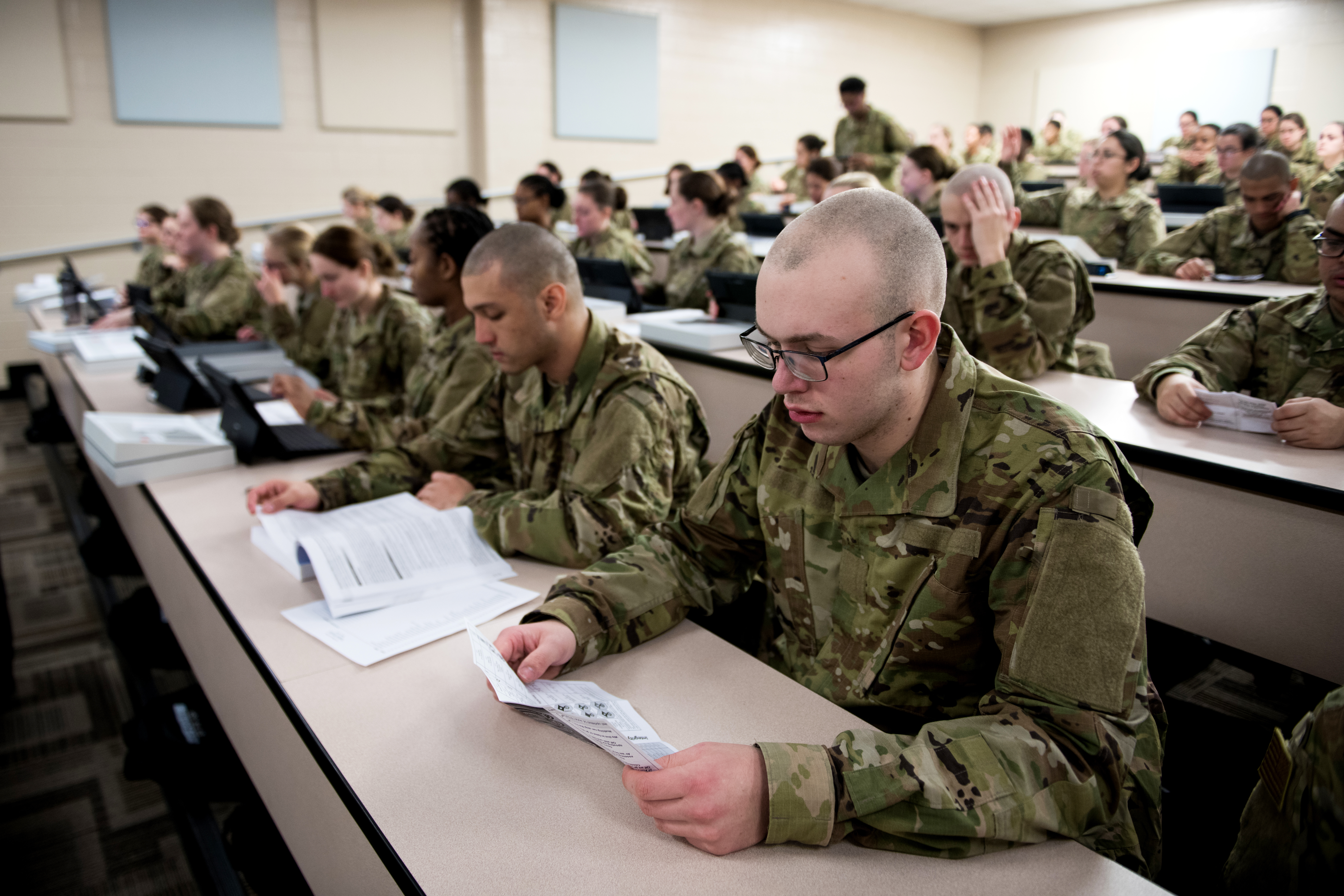Air Force to increase its recruitment goal in 2025
“It’s ambitious, but I believe it is executable. The environment is still going to be tough in 2025," Brig. Gen. Christopher Amrhein said.
After missing its recruiting goals for the first time since 1999 last year, the Air Force is on the trajectory to hit its recruitment targets across all components for fiscal 2024. Now, the service plans to increase its recruitment by 16% in 2025.
More than 370 additional recruiting personnel will be required to help the service achieve that target.
“It’s ambitious but, but I believe it is executable. We had to get the recruiter plus up to help get to that solution set,” Brig. Gen. Christopher Amrhein told reporters at AFA’s Air, Space & Cyber Conference.
The service wanted to bring in 26,000 active duty Airmen for fiscal 2024. In response to a decline in retention rates this year, the service increased its recruiting goal by 1,200.
For 2025, the Air Force wants to bring in 32,500 active-duty Airmen, 7,600 new reservists, 8,679 Guardsmen and 800 Guardians.
Amrhein said there was no single policy adjustment or introduced incentive structure that changed the recruiting landscape, but rather “multiple levers” that contributed to the successful year.
“We’re not out of the woods yet, and the environment is still going to be tough in 2025. The number one question I get asked is, ‘What was the one thing that changed for this year?’ And my answer is, ‘There wasn’t one thing. It was multiple levers being pulled or done in unison to give the recruiting force the abilities to be able to get out there and find the talent and bring it in,” said Amrhein.
In 2023, for instance, the service reinstated its Enlisted College Loan Repayment Program to align enlistment incentives with the sister services and entice more recruits into its ranks. New recruits, regardless of their Air Force Specialty Code, may be eligible for up to $65,000 in student loan repayments.
The service adjusted its internal requirements, including revising its tattoo policies, modifying the body composition program and changing its drug testing requirements.
Additionally, to expand its recruitment pool, the service now allows legal permanent residents to enlist. In January, Amrhein adjusted the legal permanent resident requirement from 10 years to two years to align with the Defense Department allowances.
Amrhein said that given the accelerated naturalization program’s 93% success rate and the timeline for receiving U.S. citizenship, the service is exploring the possibility of allowing legal residents to apply for specialties that require U.S. citizenship as a basic qualification.
“What I’ve asked the team to look at now is we’ve had the conditional depth for medical can we put a conditional [Air Force Specialty Codes] depth for those that don’t have U.S. citizenship yet? But once they have that, then it opens up the opportunities for more AFSC. So we still have some things to work through to get that, but I think that that is going to be another area to expand the opportunities that are out there,” said Amrhein.
A lot of efforts were focused on reducing the medical accession processing timeline this year. Last fall, the Air Force Recruiting Service added 63 contractors to help process medical records, which allowed recruiters to have more face-to-face time with applicants.
“We were able to see about 8,800 people in 2023 that walked away from the accessions process because the medical assessment was taking too long,” said Amrhein.
And there have been shifts in the service’s recruitment strategy — it switched from quarterly to monthly recruitment goals and started focusing more on recruiter training. To further streamline the process, the service has expanded its use of the Lead Refinement Center and E-recruiter tools to find and process leads more efficiently.
“We made some changes. We focused heavily on medical this year, and then, and then community and outreach, the partnerships that we’re building. Those are all additional levers that came over the last year,” said Amrhein.
While 2024 is shaping up to be a successful year for the services, this complex recruitment picture highlights the multifaceted challenges the military continues to face. “This is an incredible achievement, particularly in today’s challenging recruiting environment where we face intense competition from the private sector,” said Amrhein.
“But make no mistake, we cannot take our hand off the throttle and we must remain laser focused on the mission.”
Copyright © 2025 Federal News Network. All rights reserved. This website is not intended for users located within the European Economic Area.





